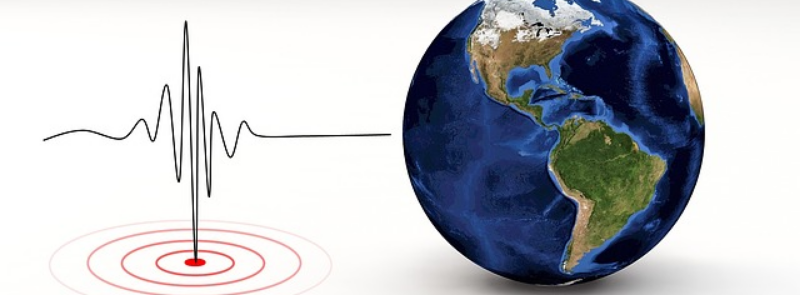
When It Occurs
Every April 26th
Timeline
Days Passed (901)
# Hashtags
#NationalRichterScaleDay #EarthquakeControl
On National Richter Scale Day, it's the perfect time to secure your hats, double-check foundations, and listen for any telltale rumblings from the depths of the Earth! This day serves as a recognition and celebration of the birthday of Charles F. Richter, the man who educated the world on measuring the magnitude and effects of earthquakes.
Historical Background
Who Was Charles F. Richter?
- Birth and Education: Charles Francis Richter was born on April 26, 1900, in Hamilton, Ohio. He grew up in Los Angeles, California, and later attended Stanford University, where he studied physics. Richter then pursued his graduate studies at the California Institute of Technology (Caltech), where he developed an interest in seismology.
- Development of the Richter Scale: In 1935, while working at Caltech, Richter developed the Richter scale in collaboration with Beno Gutenberg, a German seismologist. The scale was designed to quantify the size or magnitude of earthquakes by measuring the amplitude of seismic waves. It became the first standardized method for measuring earthquake magnitudes, revolutionizing the field of seismology.
The Richter Scale:
- How It Works: The Richter scale is a logarithmic scale, meaning that each whole number increase on the scale represents a tenfold increase in the amplitude of the seismic waves. For example, a magnitude 5 earthquake is ten times more powerful than a magnitude 4 earthquake. The scale also indicates a 31.6 times increase in energy release with each whole number increment.
- Limitations and Evolution: While the Richter scale was a groundbreaking tool, it has since been largely replaced by the moment magnitude scale (Mw), which provides a more accurate measure of an earthquake’s size, especially for very large events. However, the Richter scale remains widely recognized and is often referenced in popular culture.
Purpose and Objectives
Raising Earthquake Awareness:
- National Richter Scale Day aims to raise awareness about the risks and realities of earthquakes. It encourages individuals and communities to learn more about how earthquakes occur, the potential dangers they pose, and how to prepare for them.
Promoting Seismology:
- The day also highlights the importance of seismology, the scientific study of earthquakes and the propagation of seismic waves through the Earth. By understanding the science behind earthquakes, we can better predict, prepare for, and respond to seismic events.
Honoring Charles F. Richter:
- National Richter Scale Day serves as a tribute to Charles F. Richter and his contributions to seismology. His work laid the foundation for modern earthquake measurement and significantly advanced our understanding of these powerful natural phenomena.
Celebrating National Richter Scale Day
Educational Activities:
- Many schools, museums, and science centers use National Richter Scale Day as an opportunity to teach students and the public about earthquakes and the science of seismology. This might include hands-on activities, demonstrations of how the Richter scale works, and discussions about earthquake safety.
Earthquake Preparedness:
- Earthquake preparedness is a key focus of National Richter Scale Day. Communities and organizations may hold drills, workshops, or informational sessions on how to prepare for an earthquake, including creating emergency kits, developing family communication plans, and securing homes against seismic activity.
Exploring Earthquake History:
- The day provides an opportunity to explore the history of significant earthquakes and their impact on communities. Learning about past earthquakes, such as the 1906 San Francisco earthquake or the 2011 Tōhoku earthquake in Japan, can provide valuable lessons in disaster preparedness and response.
Visiting Science Museums:
- Visiting science museums or geological exhibits is a great way to celebrate National Richter Scale Day. Many museums feature exhibits on earthquakes, tectonic plates, and the tools used to measure seismic activity, providing an engaging way to learn about these topics.
Importance of the Richter Scale
Measuring Earthquakes:
- The Richter scale was the first tool that allowed scientists to quantify the size of earthquakes in a standardized way. Before its development, there was no consistent method for comparing the severity of different earthquakes.
Public Awareness:
- The scale helped raise public awareness about the potential dangers of earthquakes and the importance of building codes, emergency preparedness, and research into earthquake prediction and mitigation.
Cultural Impact:
- The term "Richter scale" has entered popular culture as a way to describe the intensity of not only earthquakes but also other impactful events. Though the scale has been largely superseded by the moment magnitude scale, the name "Richter" remains synonymous with earthquake measurement.
Earthquake Preparedness Tips
Create an Emergency Kit:
- An emergency kit should include essential items such as water, non-perishable food, a flashlight, batteries, a first-aid kit, medications, and important documents. Keep the kit in an easily accessible location.
Develop a Family Communication Plan:
- Make sure all family members know how to contact each other during an emergency and establish a meeting point in case you are separated.
Secure Your Home:
- Take steps to secure heavy furniture, appliances, and other items that could fall and cause injury during an earthquake. Anchor bookshelves to walls, use earthquake putty for delicate items, and ensure that gas and water lines are flexible.
Know What to Do During an Earthquake:
- During an earthquake, remember to "Drop, Cover, and Hold On." Drop to your hands and knees, cover your head and neck under sturdy furniture or against an interior wall, and hold on until the shaking stops.
Fun Facts About the Richter Scale
- First Recorded Use: The Richter scale was first used to measure an earthquake that occurred in Long Beach, California, on March 10, 1933.
- Magnitude 9.5: The largest earthquake ever recorded, according to the moment magnitude scale, was the 1960 Valdivia earthquake in Chile, which registered a magnitude of 9.5.
- Logarithmic Scale: Because the Richter scale is logarithmic, an earthquake that measures 7.0 is not twice as strong as one that measures 3.5—it's exponentially stronger.
Conclusion
National Richter Scale Day is a day to honor the legacy of Charles F. Richter and the revolutionary scale he developed to measure earthquakes. It is also a day to raise awareness about the importance of earthquake preparedness and to educate the public about the science of seismology. Whether through educational activities, community events, or personal reflection on the power of nature, National Richter Scale Day encourages us to recognize the significance of earthquakes and the ongoing efforts to mitigate their impact.


